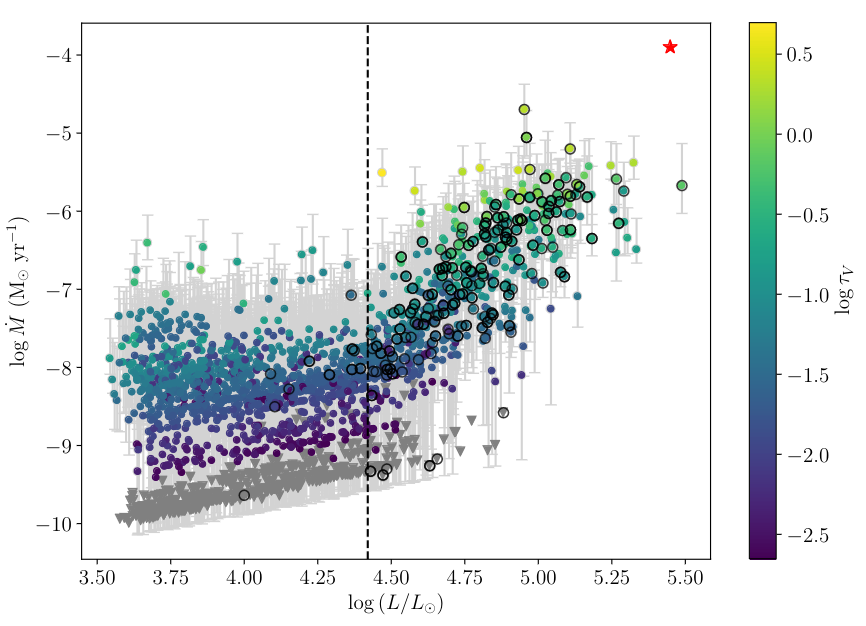K. Antoniadis, A.Z. Bonanos, S. de Wit, E. Zapartas, G. Munoz-Sanchez, G. Maravelias
High mass-loss rates of red supergiants (RSGs) drastically affect their evolution and final fate, yet their mass-loss mechanism remains poorly understood. Various empirical prescriptions scaled with luminosity have been derived in the literature, yielding results with a dispersion of 2-3 orders of magnitude. We aim to determine an accurate mass-loss rate relation with luminosity and other parameters using a large, clean sample of RSGs and explain the discrepancy between previous works. We assembled a sample of 2,219 RSG candidates in the Large Magellanic Cloud, with ultraviolet to mid-infrared photometry in up to 49 filters. We determined the luminosity of each RSG by integrating the spectral energy distribution and the mass-loss rate using the radiative transfer code DUSTY. Our derived RSG mass-loss rates range from 10−9M⊙ yr−1 to 10−5M⊙ yr−1, depending mainly on the luminosity. The average mass-loss rate is 9.3×10−7M⊙ yr−1 for log(L/L⊙)>4. We established a mass-loss rate relation as a function of the luminosity and the effective temperature. Furthermore, we found a turning point in the mass-loss rate versus luminosity relation at approximately log(L/L⊙)=4.4, indicating enhanced rates beyond this limit. We show that this enhancement correlates with photometric variability. Moreover, we compare our results with prescriptions from the literature, finding an agreement with those assuming steady-state winds. Additionally, we examine the effect of different assumptions on our models and found that radiatively driven winds result in higher mass loss rates by 2-3 orders of magnitude, which are unrealistically high for RSGs. Finally, we found 21% of our sample to constitute current binary candidates with a minor effect on our mass-loss relation.

